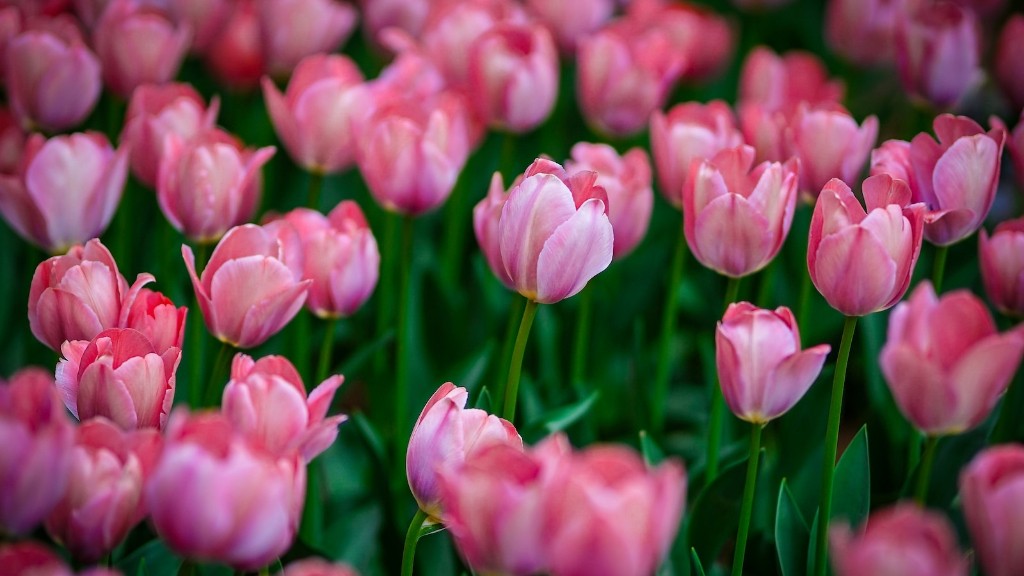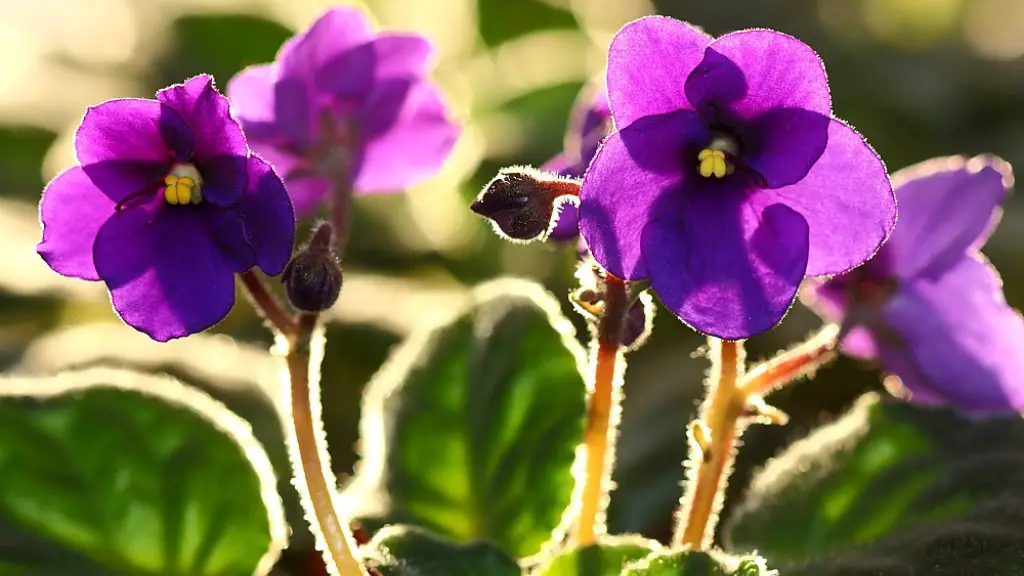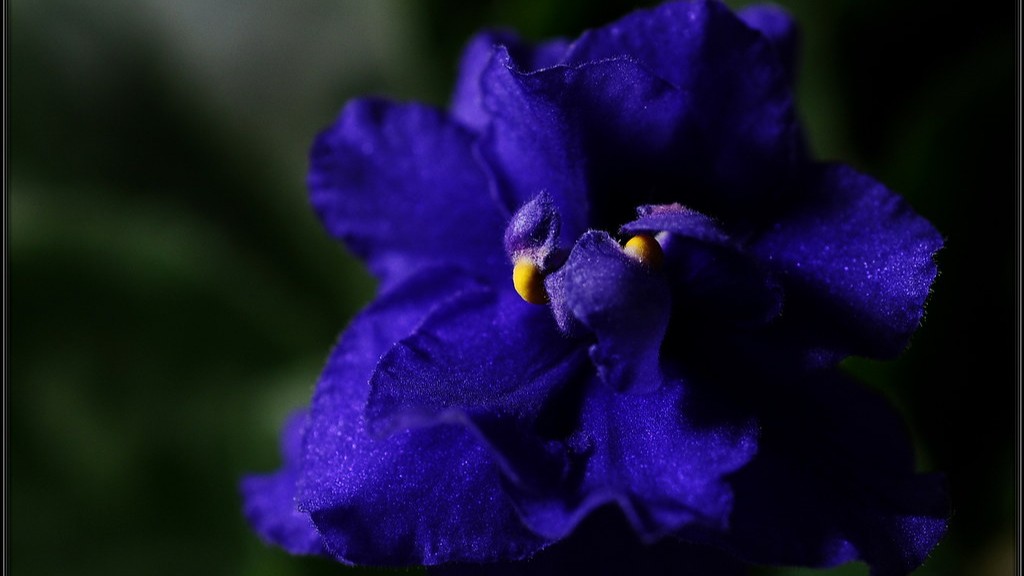In general, aphids are very small insects that can be a range of colors including white, black, green, and brown. Aphids on African violets may be any of these colors, but they are generally fairly small and tend to congregate on the underside of the leaves where they suck sap from the plant. This damage can cause the leaves to yellow and eventually die if the infestation is not controlled.
Aphids are small, pear-shaped insects that are typically green, although they can also be brown, black, or yellow. They have long, slender legs and antennae, and they can be found on the underside of African violet leaves, where they feed on the sap.
How do you treat African violets with aphids?
Aphids can be a problem for African violets, but luckily there are easy ways to treat them. Simply clean the leaves of the plant with warm water and dish soap, making sure to check the undersides of the leaves too. If the problem persists, you can try using a houseplant-friendly pesticide to get rid of the aphids.
Powdery mildew is a fungal disease that is common on indoor plants, such as African violets, begonias, and poinsettias. Outbreaks of powdery mildew on houseplants typically occur in winter or early spring. The white material on the foliage of your African violets is probably powdery mildew.
Powdery mildew is caused by a fungal pathogen that grows on the surface of leaves and produces a white, powdery growth. The fungus feeds on the leaf tissue and can cause the leaves to turn yellow and eventually drop off.
To control powdery mildew, start by improving the plant’s environment. Powdery mildew thrives in humid, poorly ventilated conditions. Increase air circulation around your plants by running a fan or opening a window. If possible, move your plants to a brighter location.
You can also treat powdery mildew with a fungicide. Be sure to follow the directions on the label. Some fungicides are only effective against certain types of fungi, so it’s important to choose the right one.
How do I know if its aphids
Aphids are small, soft-bodied insects that can be found on the leaves of plants. They are usually green or white, but can also be yellow, brown, or black. Aphids have two cornicles (tail pipes) at the end of their abdomen, which are used to produce a waxy substance that protects them from predators. They also shed their exoskeletons (skins) as they grow, which can be found on leaves or in honeydew secretions.
If you have African violets with aphids, you can use simple warm water and dish soap to remove them. Alternatively, you can find different pesticides that will kill aphids on African violets. But for these and other pests, it’s always better to try non-chemical methods first. Neem oil is another option.
What is the best treatment for aphids?
If you need to use insecticides, insecticidal soaps and oils are the best choices for most situations. Oils may include petroleum-based horticultural oils or plant-derived oils such as neem or canola oil. These products kill primarily by smothering the aphid, so thorough coverage of infested foliage is required.
Alcohol can be used as a plant spray, but it can damage some plants. It is best to test spray a few leaves first and wait a few days to ensure the solution won’t destroy the plant.
What do thrips on African violets look like?
Thrips are a common pest for African violets and can cause a great deal of damage. These very small insects (1/16 of an inch) are long and narrow and are yellowish to blackish in color. Thrips usually feed on the leaves of African violets, causing them to turn brown and curl up. In severe infestations, the leaves may drop off the plant. Thrips can also spread disease from one plant to another.
These spider mites are serious pests of African violets and other ornamentals. They are most active in warm, dry conditions and can quickly build up to high numbers. The mites suck plant juices, causing leaves to become pale and stippled. In severe cases, leaves may turn brown and drop off. The mites also produce a fine webbing that covers leaves and stems.
Can you spray neem on African violets
Neem oil is effective at treating both insects and powdery mildew on African violets. When used as directed, it is safe for both people and pets.
Aphids can sometimes be controlled by natural means, but it is usually best to take proactive measures to prevent or get rid of them. released by their host plants. Aphids can also be controlled by using chemical pesticides, but this should be a last resort.
Should I leave aphids alone?
Aphids are actually helpful to have around in the garden, as they help to pollinate plants. While they can be a nuisance when their population gets too large, more often than not, they are nothing to worry about.
Aphids can be a real problem for gardeners, but there is an easy and organic way to get rid of them! Just mix a few drops of dish soap with water in a spray bottle and spray it liberally over the plant, making sure to reach all parts of the plant, including the undersides of leaves. The soapy water will trap and suffocate the aphids, killing them quickly and effectively.
Can you spray insecticide on African violets
The African Violet Society of America (AVSA) recommends using neem oil as an insecticide to help control pests on your plants. To use, simply spray the foliage of your plant and then wipe it gently with a soft cloth. Repeat treatments as needed until symptoms subside.
If your African violets are being pestered by insects, a gentle plant spray like Insecticidal Soap can help control the problem. This soap-based spray works by coating the insects with a thin layer of soap, which disrupts their ability to breathe and eventually kills them. While it’s unlikely to completely eliminate all the insects from your plants, it can help reduce their numbers and keep them under control.
What are these tiny little black bugs?
If you have fruit flies in your home, you can get rid of them by taking some simple steps. First, remove any overripe or rotting fruit from your kitchen. This will eliminate the flies’ food source and make your home less attractive to them. Next, clean all of your fruit-fly-prone surfaces, such as countertops and sinks, to get rid of any sticky residue that might be attracting them. Finally, set out a trap to catch the remaining flies. To do this, mix one part vinegar with one part water in a bowl, and then cover the bowl with plastic wrap. Puncture a few small holes in the wrap, and wait for the flies to be drawn in and trapped.
The most important thing to remember when using soap and water to kill aphids is to thoroughly wet the plant leaves and stems. Be sure to get the undersides of the leaves where aphids often congregate. Allow the soap and water mixture to remain on the plant for at least a day before washing it off.
Conclusion
There are many different species of aphids, and they can vary in appearance. However, most aphids are small, soft-bodied insects that are usually green, black, or brown in color. Aphids often congregate on the leaves and stems of African violets, and they can cause damage to the plant by sapping nutrients and causing deformation.
Aphids on African violets typically are found on the undersides of leaves and around the tips of new growth. They are small, soft-bodied insects that may be green, yellow, brown, red, or black.





